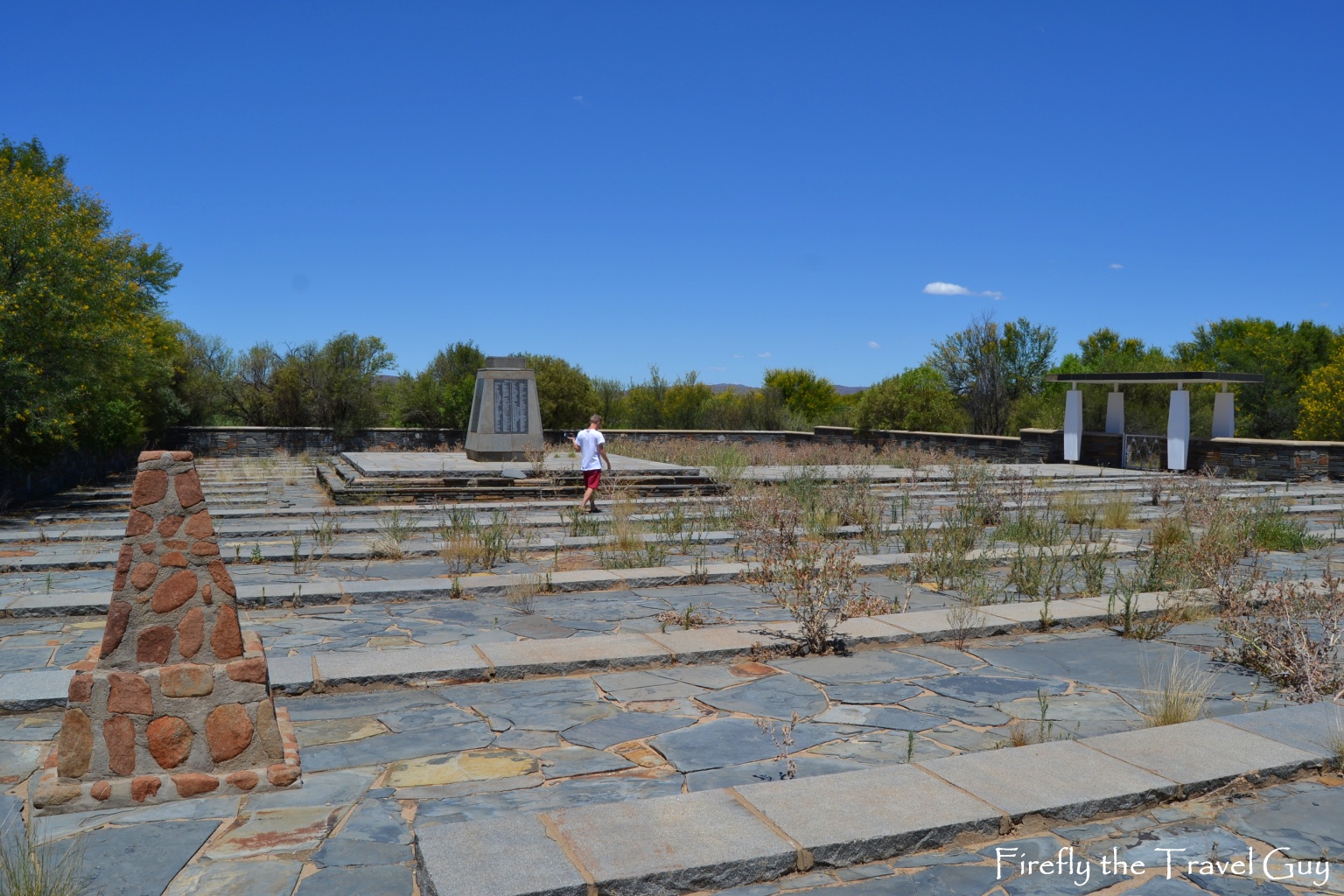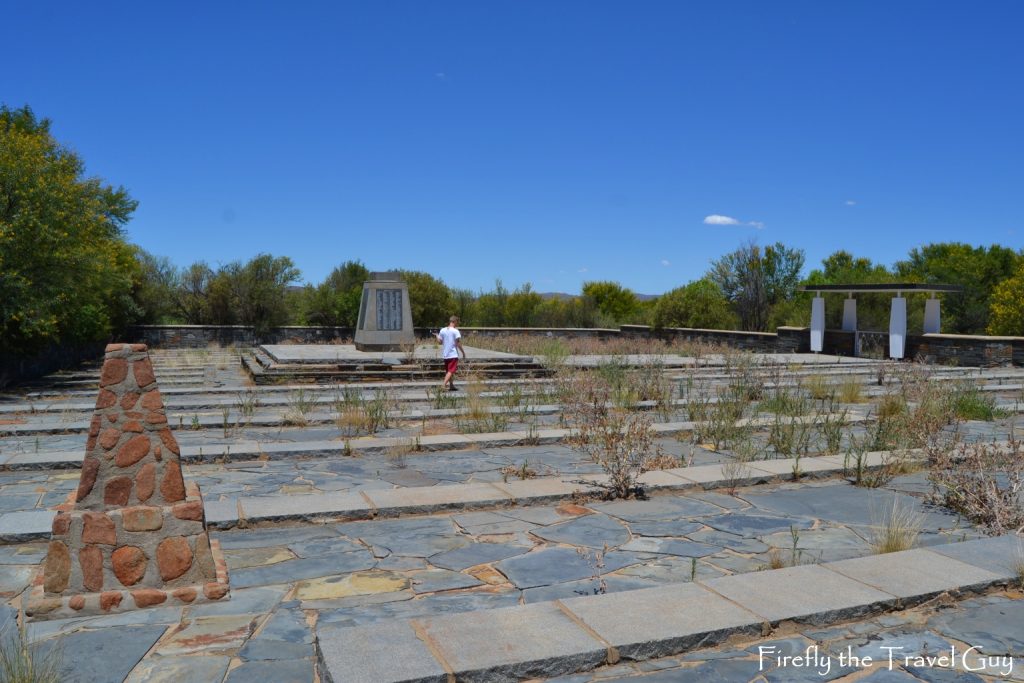
The Anglo Boer War (1899 – 1902) is one of the big turning points in South Africa’s history along with the arrival of Europeans in the country, the Great Trek, the Apartheid years and a new democratic South Africa. Okay, so our history is about more than just those five turning points but that is what came to my mind just now. One of the most significant things that happened during the Anglo Boar War was that it was the first time ever that concentration camps were used anywhere in the world. During the war thousands of men, women and children were kept in these camps with 4 177 Boer women, 22 074 children under sixteen and 1 676 Boer men dying in them. That’s not even counting the over 14 000 deaths in black concentration camps.
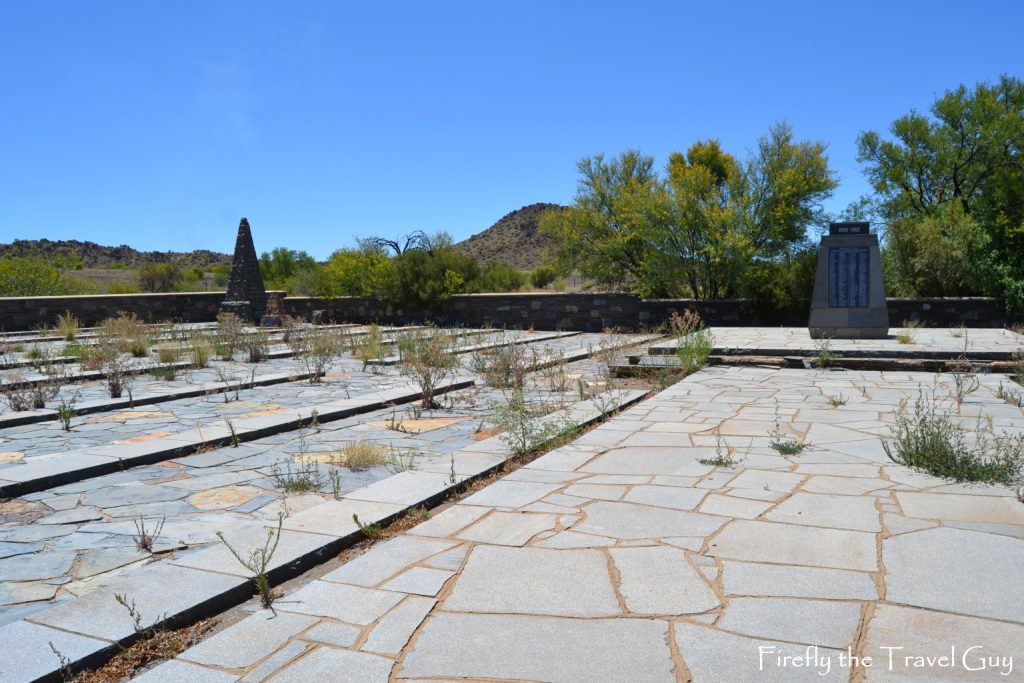
My son is an absolute history junkie and on our way back from a visit up north I decided to detour just after the Gariep Dam to show him the Norvalspont Concentration Camp Memorial. It’s not a long detour and after a short dirt road we arrived at the site. What hits you is the fact that it’s not a magnificent monument, there’s no fancy visitor centre, no guides to show visitors around and no tourist trap curio and food stalls. In actual fact, there wasn’t another soul in sight. Just a big paved area surrounded by a low stone wall and three stone monuments with plaques on them.

The concentration camps were created to house the victims of the scorched earth policies introduced by Milner and Kitchener, where the farm houses of the Boer farmers were destroyed to prevent them being used to provide support to the Boer Commandos. Norvalspont Concentration Camp was established in 1900 and initially the camp housed Boer women and children, with approximately 400 interns by February 1901. In June 1901 hundreds of African prisoners were also interned in the camp, and by February 1902 there were as many as 3479 detainees.


Norvalspont was seen as a model camp and was much better off than most of the other camps even though conditions were still very bad. It was situated on the banks of the Orange River which meant that there was at least enough water and fire wood available but it was not as if Norvalspont lacked the problems of the other camps. On the contrary, the measles epidemic struck early and was followed by scarlet fever and diphtheria. Families also poured in without warning and tents and blankets often ran out.

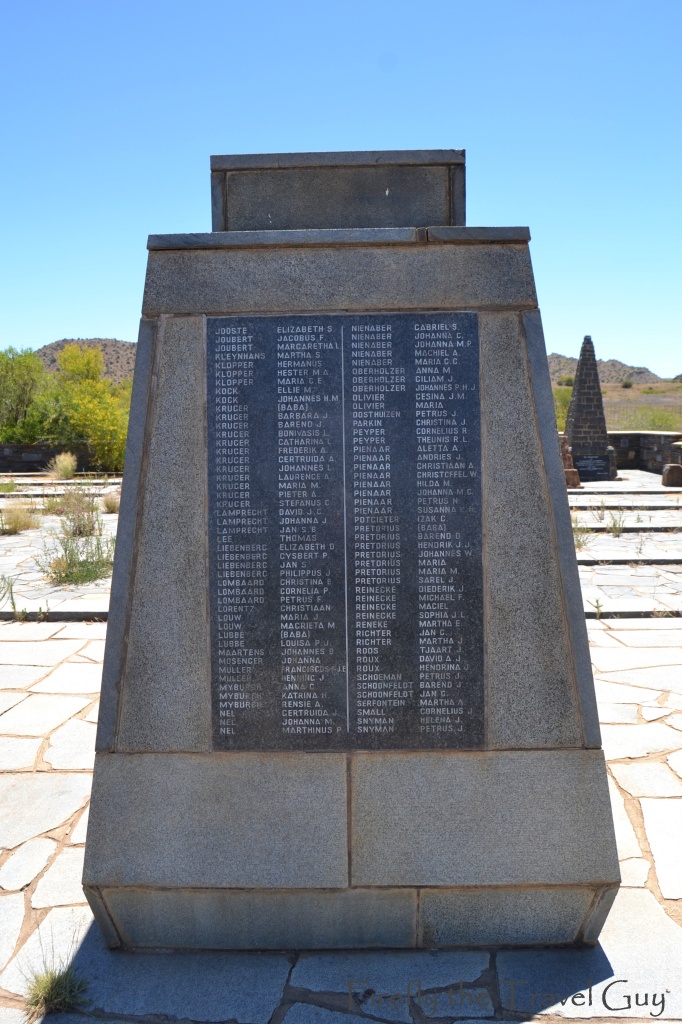
The camp was one of those visited by Emily Hobhouse in 1901. By then the Concentration Camps were no longer under the management of the British Army, but under civil administration. She described the conditions at the camp as one of the best in the network of Concentration Camps in the Orange River Colony. Imagine how bad some of them would have to be then. Hobhouse wrote in her report on the camp that, even though she slept in a marquee tent with a double layer of canvas for shelter, her bedding was always soaking wet in the morning from the dew. During the day the temperature rose to 40° Celsius, and she mentioned that in the clock-tents the temperature rose as high as 43° Celsius.
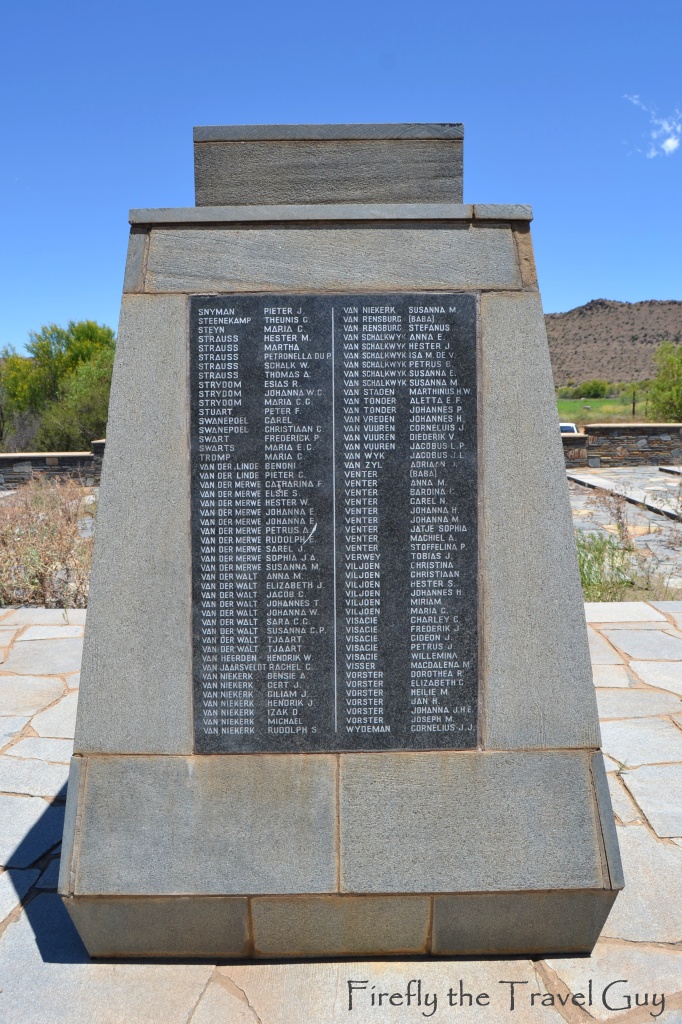

At times there were over three thousands people housed at Norvalspont, and by the end of the war 412 men, women and children had died in the camp. The names of those who died in the Norvalpont Concentration Camp are recorded on a memorial on the site to honour their memory Its really heartbreaking to see that out of the four plaques of names, three are all children under 15 years old.
Standing there on a hot summers afternoon without a breath of air moving and only cicadas calling it does become a bit of a profound experience. One where you realize how much sadness and despair there must have been right there yet there is also a spirit of strong and proud people who supported each other and stood together through this difficult time. A profound experience indeed.
